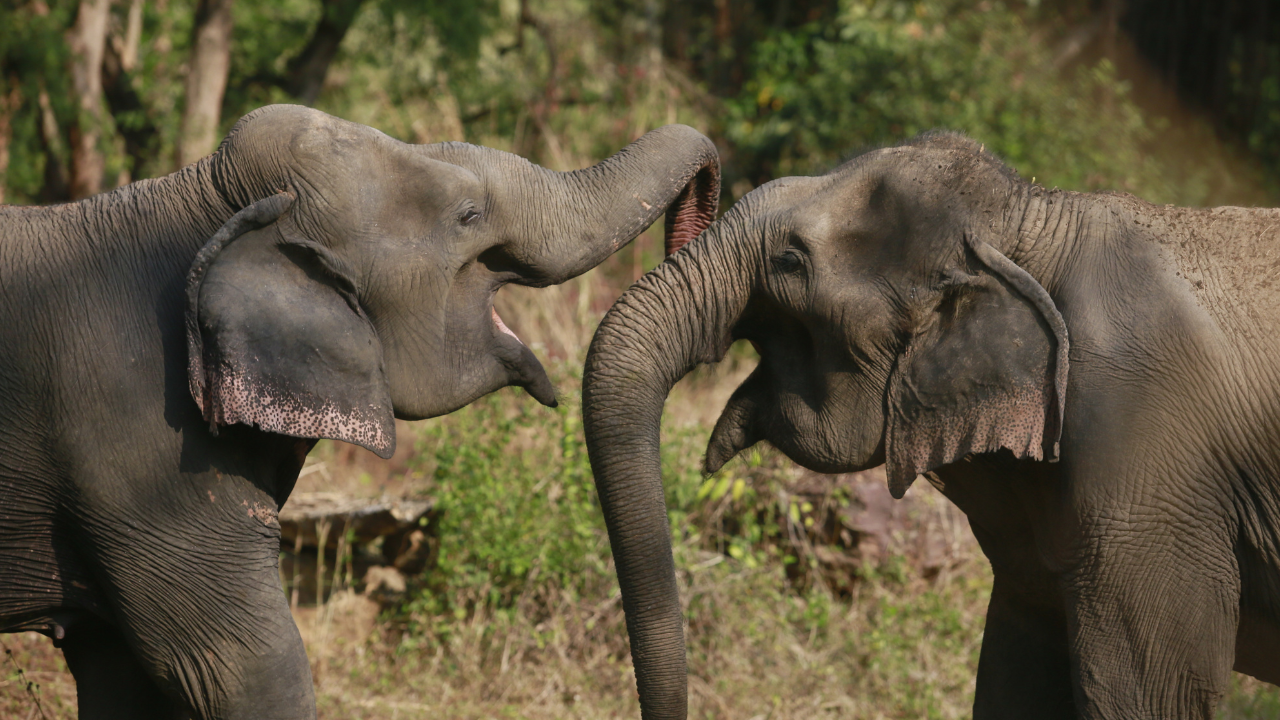Celebrating 75 years protecting animals
Discover 75 years of action, advocacy, and impact for animals worldwide.

Animal Awareness Days
Civets are small, cat-like mammals that live in tropical forests. Highly sentient and intelligent creatures, they communicate with one another by growling, screaming, and scent marking. They also have some of the most beautiful markings in the animal kingdom.
On World Civet Day, why not celebrate these exceptional creatures and learn more about the threats they face?
World Civet Day (also known as National Civet Day) is held on the 4th of April every year. It's a day in which we shine a spotlight on this secretive and little-known mammal, sharing the characteristics and behaviours that make the civet such a unique creature.
It's also a chance to raise awareness of the threats civets face, particularly as part of the luxury coffee trade.
Some civet species - including Owston's civet and the large-spotted civet - are endangered. According to the IUCN Red List, the Malabar civet is critically endangered, and the numbers of common palm civets and masked palm civets are decreasing.
Here are some of the threats civets face:
To celebrate World Civet Day, do your bit to protect these magnificent mammals. Here's what you can do:
Many animals around the world need your help. Find out about other animal awareness days.

Donate now
When you make a donation, you’ll join a passionate group of supporters who are determined to change the world for animals. We're fighting animal cruelty wherever we find it — are you with us?
Click to donateWhat is a civet?
A civet is a small carnivorous mammal native to Africa, south Europe, and Asia. It has a cat-like face, a pointed snout, and a thick, furry tail. These animals are nocturnal, solitary, and highly elusive.
Can civet cats be pets?
Keeping a civet as an exotic pet is cruel. These wild animals experience extreme stress when exposed to human handling.
What is civet coffee?
Civet coffee is made from beans that have been eaten and excreted by a civet. It is seen as a delicacy in some parts of the world and is also known as Kopi Luwak (in Indonesia) and Weasel Coffee (in Vietnam).
How is civet coffee made?
Civet coffee is made from beans that have passed through the digestive system of a civet. Some civet coffee is "wild". This means beans are collected from the dung of wild civets.
However, civets are also farmed to produce civet coffee. They are force-fed and kept in battery-cage conditions, where many become ill or die.
How much does civet coffee cost?
Prices for civet coffee reach up to $300 per cup. It is thought that the coffee industry will be worth $10.9 billion USD by 2030.
Why is civet coffee so expensive?
Civet coffee is so expensive because it is successfully marketed as rare and unique. Sellers claim that the product is scarce, increasing its perceived value. Civet coffee tourism is also prevalent in Southeast Asia, where tourists are encouraged to try "the world's most famous coffee".
Are civets endangered?
Yes - and the civet coffee industry is one of the biggest threats to civets. To meet industry demands, these wild animals are torn from their natural habitat using harmful methods like box traps and snares, then sold to farms where they endure small, barren cages, poor diets, and stressful conditions, leading to self-harm, injuries, and early death.
Discover 75 years of action, advocacy, and impact for animals worldwide.
Wildlife
Would a real responsible traveller have captive wildlife entertainment on their wish list?
Blog
Discover the most interesting facts about pythons. We share python facts about their size, behaviour, habitat, threats, and...
Blog
Discover top ostrich facts as we answer your burning questions, including what do ostriches eat, how fast can...
News
A brutal whale hunt in the Faroe Islands leaves 246 dead. We are demanding an immediate end to...
News
Meta platforms are responsible for the majority of reported online animal abuse.